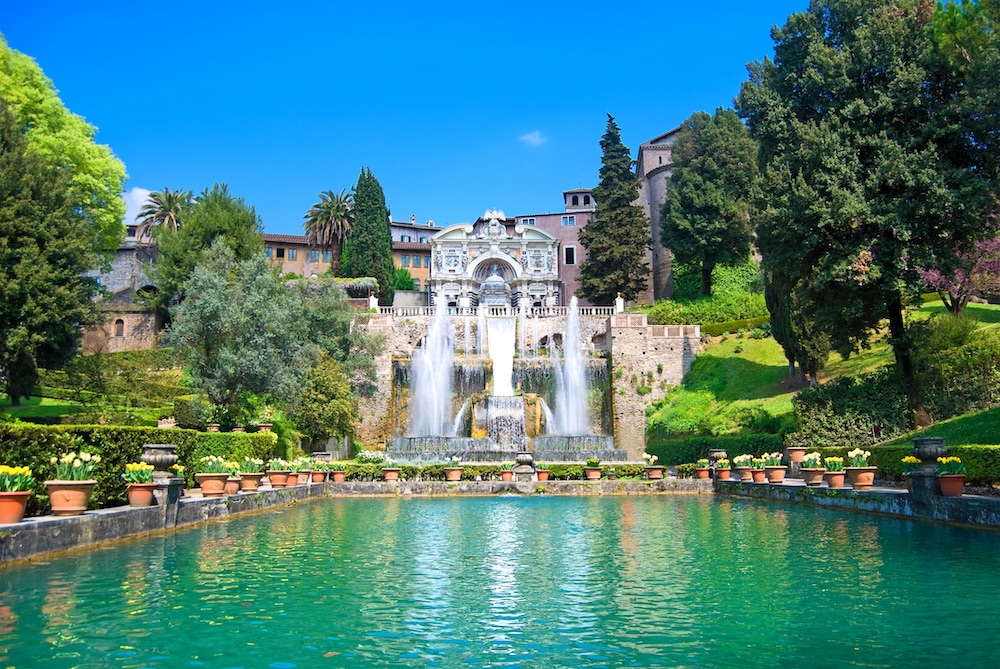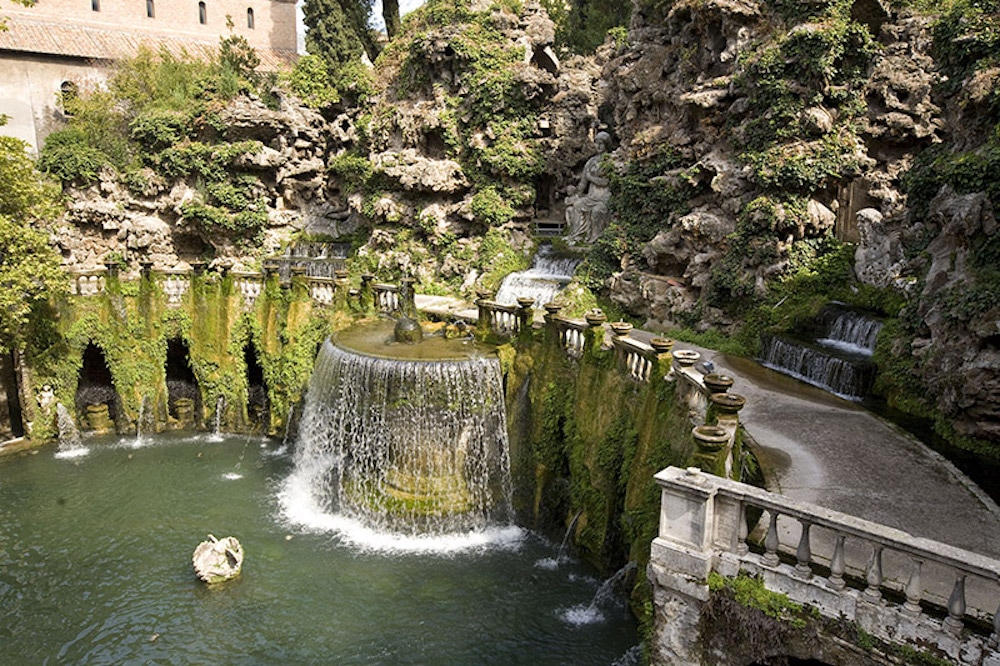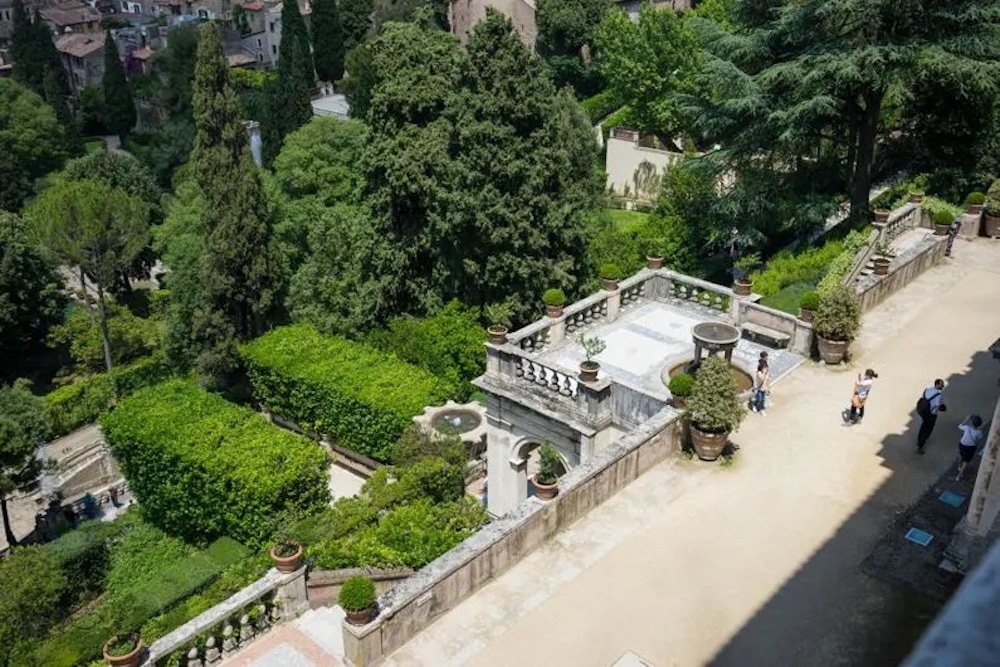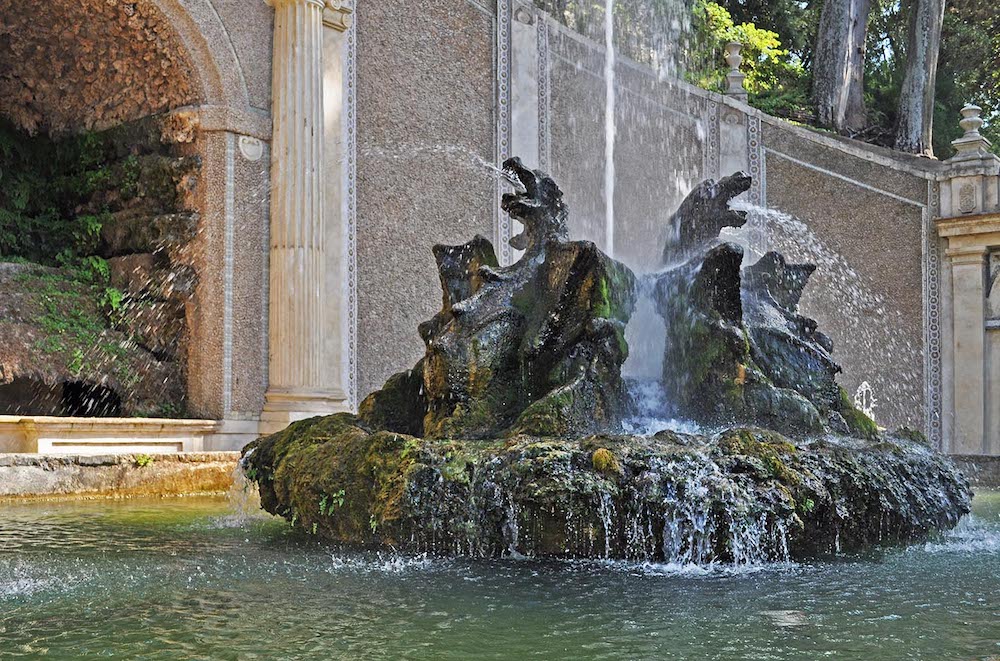Famous worldwide for its Italian garden, the most beautiful in Europe, for its sound fountains, for its water features and its Renaissance architecture, Villa d’Este in Tivoli is among the symbols of the beauty of the Italian Renaissance.
Tivoli, a village on the outskirts of Rome, is home to a wonderful Renaissance villa surrounded by a natural landscape characterized by valleys and plains: this is Villa d’Este, built at the end of the sixteenth century to a design by the architect Pirro Logorio and at the behest of Cardinal Ippolito d’Este (son of Lucrezia Borgia and Alfonso I d’Este, Duke of Ferrara). In the mind of Cardinal Villa d’Este he would have to rival the villa of Emperor Hadrian, also in Tivoli.

And together with Villa Adriana and Villa Gregoriana, Villa d’Este is part of the triptych of places to visit when you go to Tivoli. From the striking beauty, in 2001 was included among the UNESCO heritage sites.
The history of Villa d’Este
Villa D’Este was built by order of Ippolito d’Este on the remains of an ancient monastery. His goal was to create a twin of the majestic Roman palace that, at the same time, had ordered to build in Monte Giordano, Rome. The villa was to become a delightful place for meetings and confidential talks, also because the place that housed it was called Valle Gaudente.
The project was entrusted to Pirro Ligorio, an excellent architect of the time, who had several obstacles to overcome: from the dismissal of the cardinal accused of leading a dissipated and simoniac life, to the lack of permits for the purchase of the material. The construction of the villa was not easy.
In fact, Ippolito d’Este barely had time to enjoy the inauguration, and then died shortly afterwards and bequeathed the villa to his nephew Luigi and, later to Alessandro, both cardinals of Este.

Later, the villa passed into the hands of the Habsburgs, who let it perish to the point that many antique collections were dispersed. Only in the mid-nineteenth century, Cardinal Gustav Adolf von Hohenlohe-Schillingsfürst decided to restructure it and place it at the center of intense artistic and social activities; among the most assiduous frequenters of the time was Franz Liszt who, right inside the villa, found the inspiration for the composition of numerous pieces.
The last owner of the villa was Archduke Francesco Ferdinando d’Asburgo-Este, who wanted to sell the villa to the Italian State for an exorbitant amount of money. The archduke was assassinated in 1914 in Sarajevo and from his murder began the First World War. After the First World War the building became Italian property in 1918, It was subjected to major restoration works and was opened to the public during the thirties.
What to see inside Villa d’Este
Villa d’Este is simply enchanting; leaving aside the immense rooms and their frescoes, the noble corridors and the opulent rooms, what is most striking is the outside, where you can admire architectural elements not only fascinating, but also extremely valuable.
The garden
The garden of Villa d’Este, designed by Pirro Ligorio, consists of terraces and slopes and follows a typical Roman architectural scheme. Its appearance leaves nothing short of words, characterized by beautiful fountains, trees and plants of infinite variety.

To achieve this, Ligorio used the old city walls and, in doing so, also solved the problem of water supply that, in order to be able to feed all the fountains present, must be very abundant. As a result, he built a pipe system and a 600-metre-long tunnel under the city of Tivoli to draw 300 litres of water per second directly from the Aniene River.
The Vialone
The Vialone is the first large avenue that you meet by going down the double staircase that connects it to the central hall of the villa: it extends parallel to the facade of the building and is bordered on one side by the Grand Loggia and, on the other, by the Fontana Europa.

Right here the cardinal used to stay with his court during the hottest days, to enjoy the coolness coming from the garden and to attend the various shows periodically organized.
The Cave of Diana
The garden houses, inside, the Grotto of Diana: entirely decorated with mosaics and stones, stucco and bas-reliefs, it was made by Curzio Maccarrone and Lola and Paolo Calandrino, while the floor was composed of colorful majolica.

Initially, the cave was adorned with statues depicting Minerva and Diana, to which it was dedicated; today, both are located at the Capitoline Museum. On the walls, however, you can admire high reliefs of Neptune and Minerva, the Caryatids and the Muses.
The Rotunda of the Cypresses
Near the original entrance, here is the Rotonda dei Cipressi: a square in the shape of a circular exedra composed of giant cypress trees that rise to the sky. They are frai oldest existing specimens and were able to captivate visitors by adorning the beautiful statues representative of the Liberal Arts.

La Rotonda dei Cipressi, Villa d’Este
The Fountain of the Big Glass
Below the Loggia di Pandora is the Fontana del Bicchierone, also known as the Fontana del Giglio. Graceful and calm, it was built about a century after the construction of the villa commissioned by Cardinal Rinaldo d’Este to Gian Lorenzo Bernini.

The fountain represents an indented chalice (a «big glass», in fact) superimposed on another very similar, both supported by a shell. Its activation dates back to 1661 to honor the illustrious guests who used to come to the villa.
The Fountain of Pegasus
Behind the Sibilla Albunea is the Fountain of Pegasus, a large basin of circular shape that houses in the center a large rock surmounted by a statue depicting the legendary winged horse Pegasus, wings unfolded as if he were about to take flight.

La Fontana di Pegaso, Villa d’Este
The Avenue of the Hundred Fountains
The Viale delle Cento Fontane is so called because it is flanked, for a good hundred meters, just a hundred fountains. It connects the Fontana dell’Ovato with the Rometta and, along its path, sees two rows of anthropomorphic masks superimposed alternating with sculptures of lilies, obelisks, ships and eagles, all symbols that seem to have been chosen by the cardinal.

Il Viale delle Cento Fontane, Villa d’Este
The Fountain of the Ovate
To the left of Viale delle Cento Fontane, just in the background, is the Fontana dell’Ovato or Fontana di Tivoli. Also designed by Pirro Ligorio, it collects water conveyed by the river Aniene through a canal under the city. Its name derives from its shape to exedra oval, with in the center a large tank characterized by graceful jets.

La Fontana dell’Ovato, Villa d’Este
The Fountain of the Dragons
The Dragon Fountain (or Pinwheel Fountain) can be defined as the heart of the park because of its central location. Also designed and built by Pirro Ligorio, the legend says that it was made in a single night in homage to Pope Gregory XIII, guest in the villa.

The fountain is characterized by a central sculptural group composed of four dragons arranged in a circle that, giving their shoulders, «spit» a gush of water. Initially it was called Fontana della Girandola because of the complex hydraulic mechanisms designed by Tommaso da Siena, able to quickly reproduce the sounds of firecrackers, cannons or other firearms. La Rometta
At the end of Viale delle Cento Fontane, Rometta offers a truly extraordinary viewpoint that opens onto the Roman plain. At its center is represented Rome on the throne. It is accessed through a bridge that rises above a canal representing the Tiber, which houses the reproduction of an ancient Roman ship representing the Tiber Island (that is, the place where the first Roman nucleus was established).
In the past, the fountain was adorned with other sculptural groups symbolizing the main Roman monuments, such as the Arch of Titus, the Trajan Column, the Pantheon and the Colosseum; of these, unfortunately, no trace remains today.
The Fountain of Proserpina
Next to the Fountain of the Owl, the Fountain of Proserpina was initially an outdoor dining room. Composed of a central nymphaeum and two side niches, it was designed by the architect from Ferrara Giovanni Alberto Galvani who, originally, wanted to dedicate it to the Roman emperors (such as Cesare, Augusto, Traiano and Adriano); in fact, the statues initially thought were replaced by a group in stucco by Plato who kidnaps Persephone, whose statue has been officially lost.

La Fontana di Proserpina, Villa d’Este
The Fountain of the Owl
Built by Raffaello Sangallo to a design by Giovanni Del Duca, the Fountain of the Owl is located to the left of the Fountain of the Dragons and takes its name from the complicated mechanism that, exploiting the fall of water, allows metal birds to appear on the bronze branches and to intertwine in the niche of the fountain while emitting, at the same time, a chirping.

Unfortunately, this mechanism has been lost in time and, only recently, it has been possible to recover it only in part. It remains unchanged, however, the gush of water that descending form small waterfalls on two levels.
The Fountain of the Organ
The Fountain of the Organ also takes its name from the water mechanism that it holds inside and that, acting, allowed to reproduce the sounds typical of an organ. At its center is an apse that, according to the original design, was to house the statue of Diana of Ephesus. Only later, Cardinal Alessandro d’Este added a small temple commissioned from Bernini.

The mechanism did not work for a long time and, only in 2003, it was possible to reactivate it and allow the Fountain of the Organ to emit again its wonderful sounds.
The Fountain of Neptune
The Fountain of Neptune is the most impressive and spectacular of the entire villa. It was built in 1927 by Attilio Rossi with the collaboration of the engineer Emo Salvati restoring an old waterfall of Bernini. It takes its name from the presence of the bust of Neptune, initially intended for another fountain opposite the Peschiere but never realized.

La Fontana del Nettuno, Villa d’Este
Le Peschiere
In front of the Fountain of Neptune stand the Peschiere, that is three large basins of rectangular shape animated by gushes coming out from the vases placed along their edges. It is a very relaxing place and ideal for pleasant walks, initially designed to breed valuable species of freshwater fish.

Le Peschiere, Villa d’Este
The Fountain of Abundance
Also known as the Fountain of Mother Nature, the Fountain of Abundance is located near the old entrance of the villa, on Via del Colle. On a limestone background is placed the copy of the Diana of Ephesus, characterized by numerous breasts that symbolize the fertility of nature and the uninterrupted flow of life.

La Fontana dell’Abbondanza, Villa d’este
Copertina: dltviaggi




